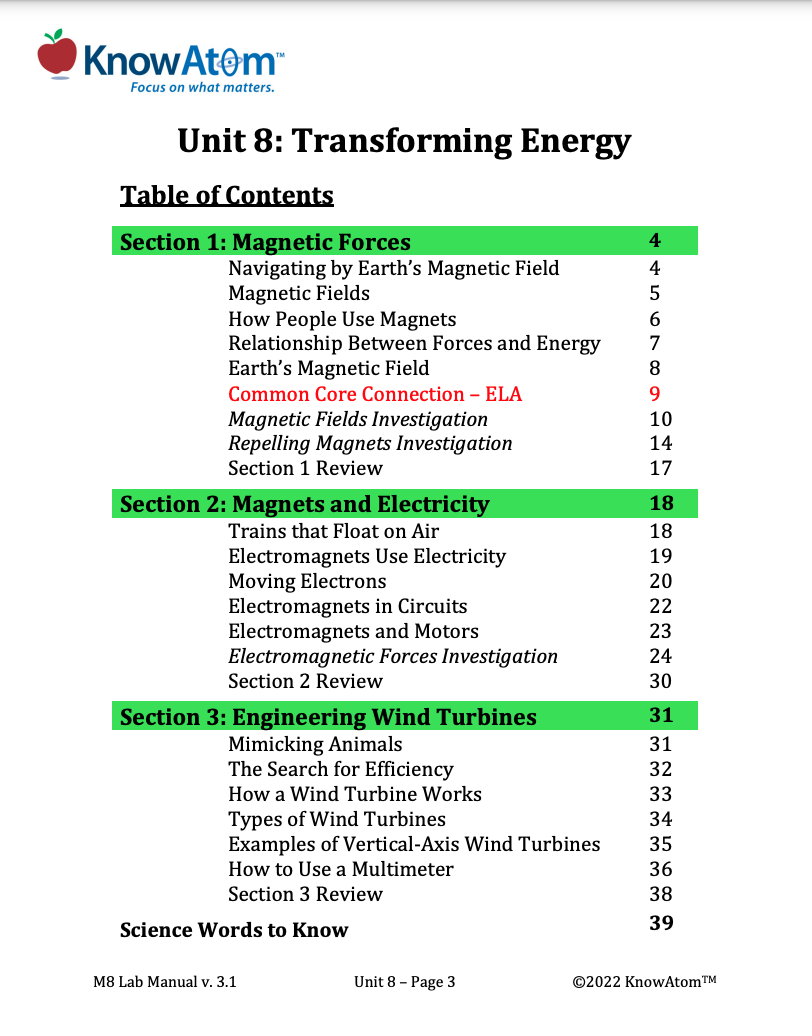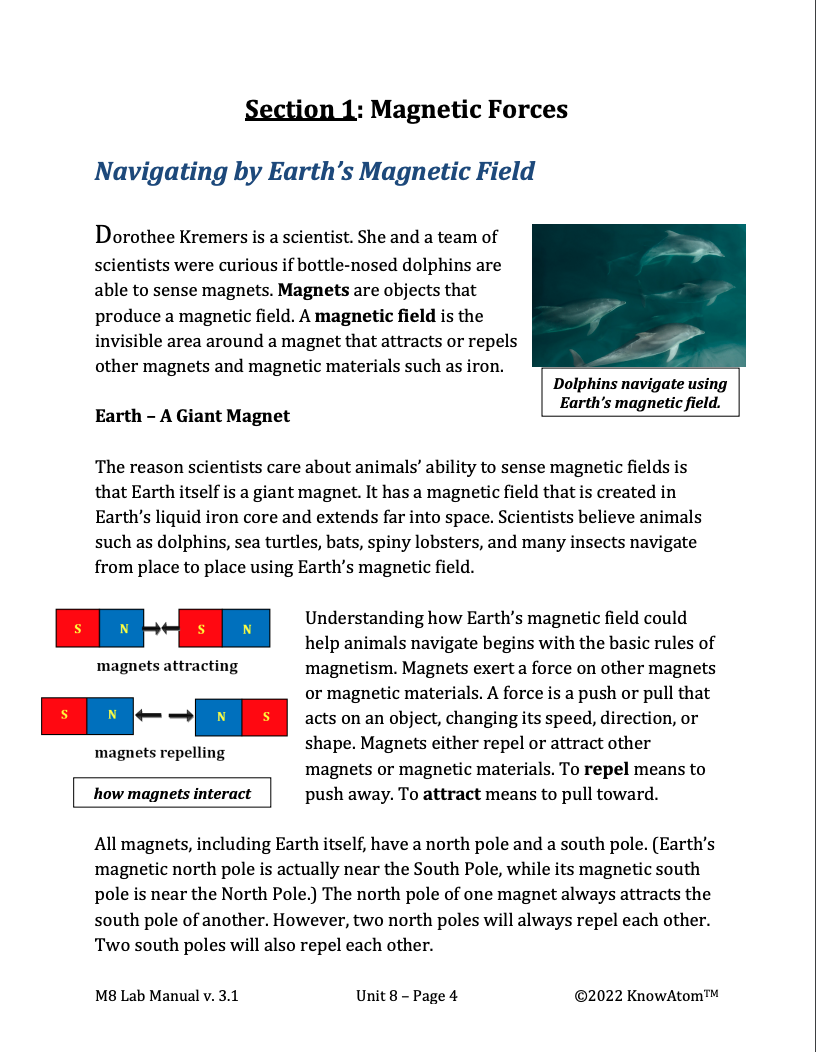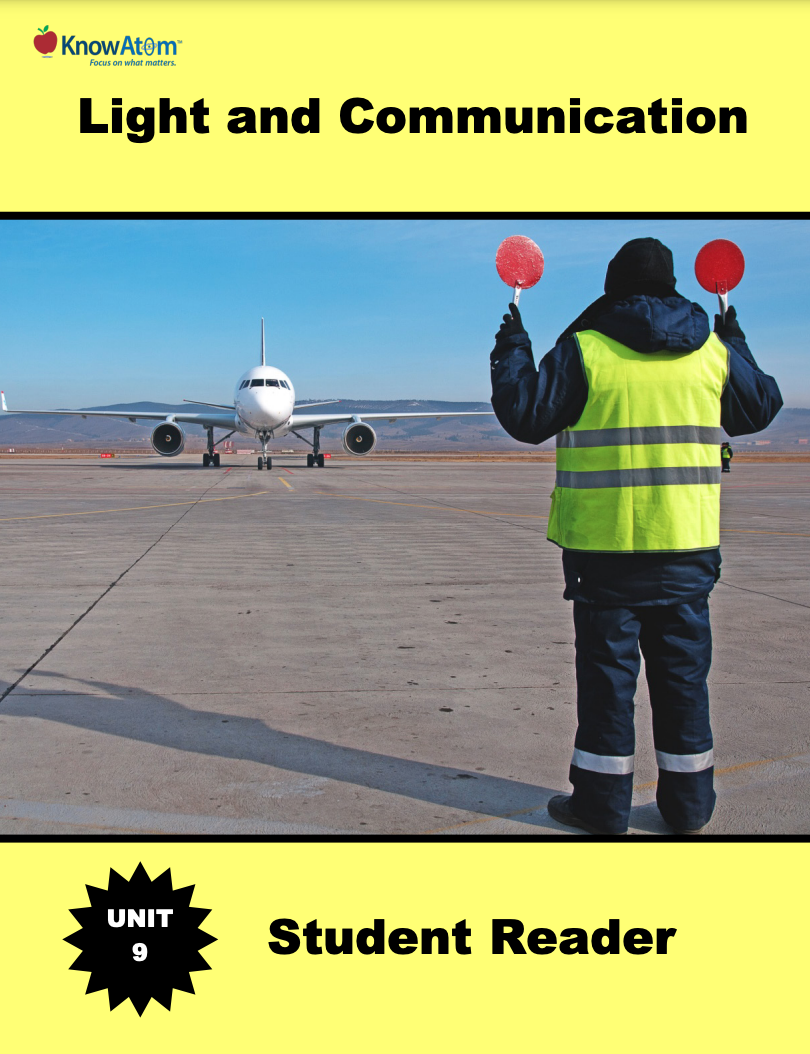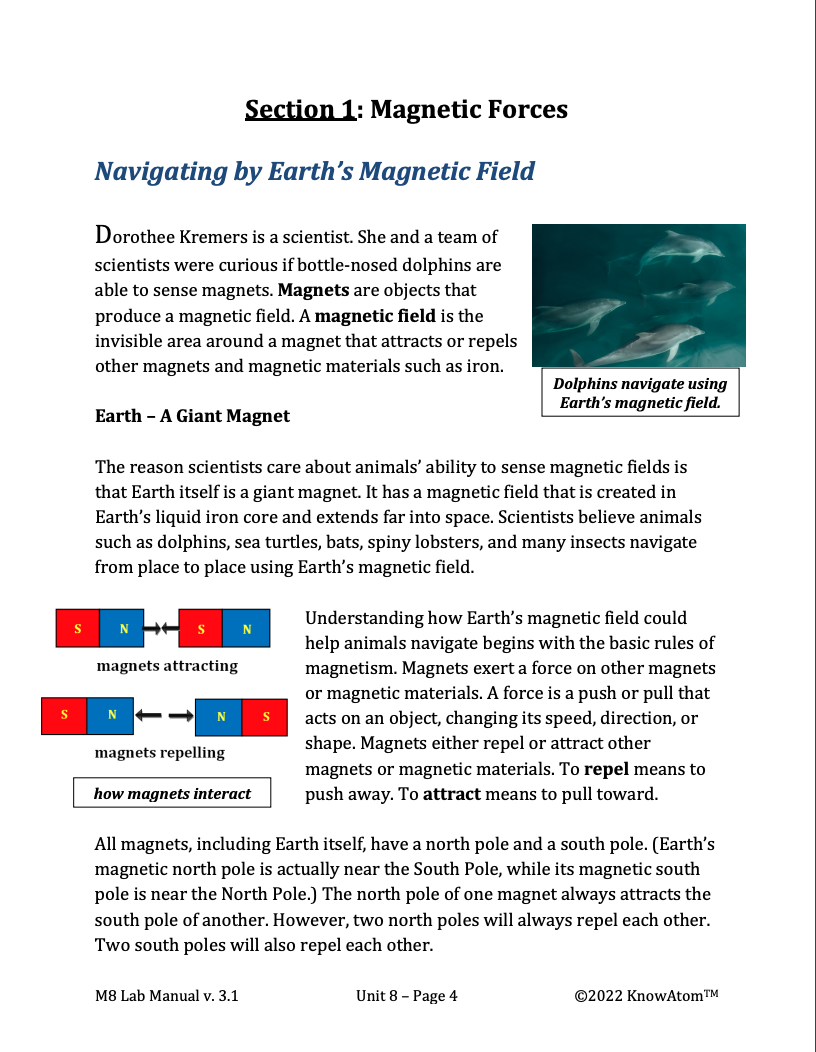
In this unit, students connect their explorations of Earth and life sciences with physical sciences with an exploration into the relationship between magnetism and electricity. In this lesson, they explore the interactions between magnets and electricity. This page is a high-level extract of this lesson.
.png)
In this unit, students explore how communication systems transmit information from one person or place to another. In this lesson, students use what they know about the science phenomena of electromagnets and magnetic fields to design a speaker, a common decoding device in many audio technologies. This page highlights key components of this lesson.

In this unit, students are introduced to the phenomena of magnetic and electric fields as they explore how objects can interact with other objects without coming into contact with them. For this lesson, students apply scientific concepts to engineer wind turbines that use a generator to produce electricity. This page provides an overview of this lesson.

In this unit, students build on what they know about the science phenomena of energy transfer to focus on information transfer and how different technologies use patterns of sound, light, or numbers to transmit information. This page showcases key components of this lesson.
.png)
In this unit, students focus on the properties of different kinds of waves and the relationship between waves and energy. In this lesson, students design a simple seismograph using what they know about the properties of seismic waves produced by earthquakes. This page is a high-level extract of this lesson.

In kindergarten, students begin to develop the practices that scientists and engineers use to help them answer questions and solve problems. This page is a high level extract from lesson 3, where students carry out an experiment to determine how heat affects water in a solid form (ice).

In kindergarten, students work towards developing routines and practices that scientists use to investigate phenomena and solve problems. This page is an extract from lesson 5 where students build on their weather observation skills as they observe and record local weather data to analyze weather patterns in their geographic area. Students continue to collect weather data over several months as they move onto the next lessons to build on their weather patterns analysis.

In kindergarten, students begin to develop the practices that scientists and engineers use to help them answer questions and solve problems. Students ask questions, make observations, and collect data as they explore weather patterns on Earth and investigate how different Earth materials are heated by the sun.

In this unit, students explore the properties of different kinds of waves and the relationship between waves and energy. In this lesson, students investigate how waves can be used to communicate and transmit information. This page highlights key components of this lesson.

In kindergarten, students explore how scientists use all of their senses to ask questions and develop hypotheses about the world around them. In this unit, students have been analyzing weather patterns and seasons as well as considering the role of the sun in heating the Earth. This page is an overview of lesson 8 in which students investigate different Earth materials often found in their school’s playground or schoolyard to observe temperature variation among different surface materials when light hits them.

Kindergarten students start to develop the practices that scientists use to gather data, make and test hypotheses, and share their findings. During this unit, students will ask questions and make observations as they explore weather patterns and investigate how the sun heats different Earth materials. This page is an extract from lesson 9 where students conduct an experiment to analyze how materials are warmed differently in the sunlight than they are in the shade.

In Kindergarten, students begin to develop practices that scientists and engineers use to gather data, make and test hypotheses, and design prototypes based on evidence to solve problems. During this lesson students will ask questions, engage in Socratic dialogue, gather evidence through experimentation, and solve problems as they explore how the sun heats different Earth materials. This page is a high-level extract from lesson 10 where students build on their understanding of the sun’s energy to heat objects by conducting an experiment to investigate how color affects heat absorption.

In this first unit, students learn to differentiate between the practices of a scientist and those of an engineer. Students ask questions, make observations, and collect data as they explore weather patterns on Earth and investigate how different Earth materials are heated by the sun. During this final lesson of the unit, students act as engineers by designing a prototype that can reduce the warming effects of the sun.
Standards citation: NGSS Lead States. 2013. Next Generation Science Standards: For States, By States. Washington, DC: The National Academies Press. Neither WestEd nor the lead states and partners that developed the Next Generation Science Standards were involved in the production of this product, and do not endorse it.
